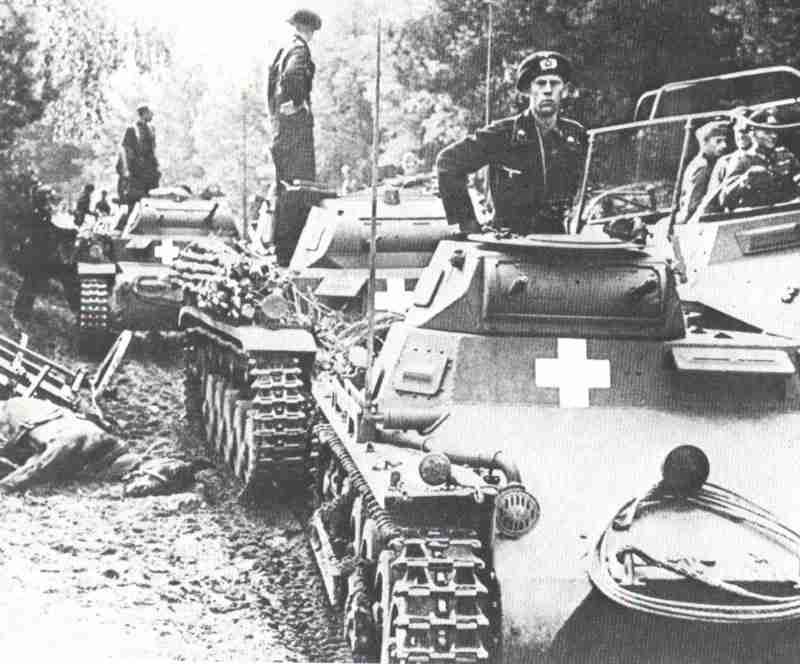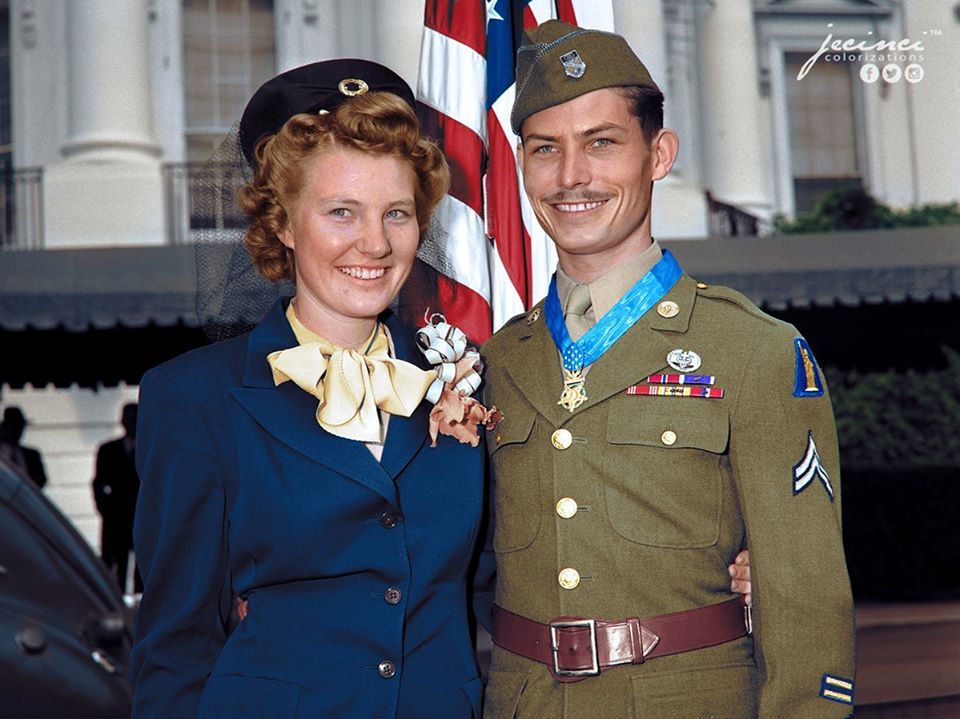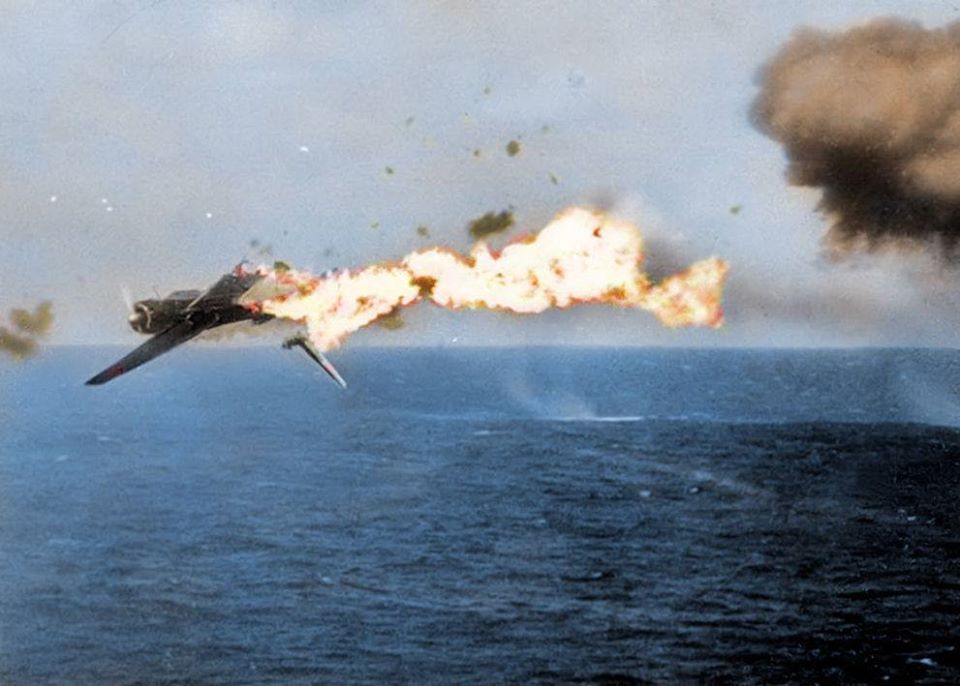yea is real surprising King didn’t convoy from the get go. USA did the same thing in WWI, not learning from their allies. A bunch of guys got slaughtered because of it.
On this day during W.W. 2
-
Missed it by a few days, but: 75 years ago last week, my uncle, Bud Piper (a U.S. Army combat engineer), visited Paris…which wasn’t liberated until 24 AUG 44. His story, which I have no reason to doubt, is remarkable.
At the time, American engineer units were “free agents,” for lack of a better term - they would be temporarily attached to this brigade to build a bridge for them, then reassigned to that battalion to clear a path through a minefield for them, and so on. In between assignments, they had down time. My uncle compared it to firefighters at their station house, waiting for a call.
During one of these periods of down time, Bud said, word reached his unit that Paris had been liberated. They were only about 30 miles from the City of Light, so my uncle and a handful of his buddies hopped in a truck and headed down the road.
As Bud explained, “unlike WWI, the front line was riddled with gaps, and some of them were pretty large. We didn’t see any live Germans along the way.” Upon reaching Paris, they drove straight to the Eiffel Tower, parked the truck, got out and started taking pictures, like any other tourists. They got a few strange looks from the locals, Bud said, but they were used to strange looks from the French. While snapping photos, they saw a squad of Germans - still armed - marching a few hundred yards away. “We assumed they were marching off to surrender,” stated Bud.
One of Bud’s squad mates wanted to get his wife some “real Parisian lingerie,” so they set out to find a shop. “We didn’t speak French and couldn’t find anyone who would admit to speaking English, but we managed to find a lingerie shop nearby,” said Bud. “While we were inside, we saw another squad of Germans march right down the street, past the store. At that point, we figured the story about Paris being liberated was just a bullsh*t rumor and high-tailed it out of there. A week later, Paris was liberated for real.”
Hard to believe? Yes. Crazy enough to be true? Yes. My uncle has never been prone to embellishment, exaggeration, etc., so I have no choice but to accept it as true.
-
@The-Pripet-Martian An outstanding tale. My mother and I did an oral history project, “Guardians of Freedom” in 2000 and interviewed alot of these vets.
The Battle of the Bulge stories were similar to what you recollect; the captured American troops had no idea that German units were in the immediate vicinity, were basically confronted over their morning coffee and marched off into captivity. Complete surprise in a ‘rear’ area and they were not in prepared combat positions at all, they were in camp.
-
since it hasn’t been done yet
80 years since adolf attacked Poland
-
@barnee thanks . It is a day I never forget.
I reminded my 12 year old cousin’s son and he was flabbergasted to have forgotten. He is obsessed with WW2 and his dad (my younger cousin) has let him watch: Circle of Evil, which he loved. He did a project on WW2 and it was very good. We spoke at my parents’ 50th Anniversary and he was very knowledgeable.
It was a delight to see such passion in a school child.
I will tell my cousin to buy him 1942 fir Christmas. I am sure he will love it. -
The surrender of Japan on this day 1945
Also yesterday Germany started it all with the attack on Poland -
September 2, 1939. Poland
Using new tactics developed by Heinz Guderian, German forces advance 50 miles into Poland in 36 hours, threatening Krakow, Lodz and other cities.
The term BLITZKRIEG has not been coined yet. Large fast-moving group of tanks, tracked artillery and troop carriers (supported by dive bombers) penetrate the front lines and fan out deep in the enemy’s rear. They attack supply dumps and HQ companies unprepared for combat, while enemy front line units are isolated, surrounded and destroyed. The undermanned Polish army is not fully mobilized and equipped with ancient weapons and horse-drawn artillery. It is outmatched and quickly overwhelmed despite brave resistance.
Following earlier assurances of Poland’s security, France and Britain are committed to war with Germany but diplomatic and strategic questions delay an immediate response on this day. However, the evacuation of children from London begins.
Photo: Guderian (top right of photo in command vehicle) guides his Panzerwaffe in Poland.

-
@captainwalker Great pic. The correct term in any event is from the century before Clausewitz; “Schwerpunkt”–the “point of maximum effort”, which correctly sums up the style of warfare and concentration better than Blitzkreig which describes the overall effect
-
And as a further point of terminology, the Schwerpunkt concept is an important component of the style of warfare which was used to conquor Poland in 1939 and the Low Countries and France in 1940, but it’s a component rather than a synonym. It refers to the concept of concentrating superior combat power at a decisive point of the front (such as the Ardennes in 1940), a concept which is valid both in mechanized and non-mechanized contexts. The style of warfare to which the term “Blitzkrieg” refers, however, is the use of massed formations of tanks, closely supported by mechanized / motorized infantry, self-propelled artillery and ground-attack aircraft, to punch through the enemy’s front lines, bypass strongpoints, and quickly penetrate deep into enemy territory to seize key objectives and to surround and isolate large groups of enemy forces. This general concept was actually considered by the Allies towards the end of WWI, as a way to “win the war in 1919” if they hadn’t already done so by then (which, in the end, they did). To be clear, however, what the Allies had in mind at the time wasn’t on the same scale as what occurred in 1939 and 1940, partly because they didn’t have the technology to do it (tanks at the time were mostly too slow, and the only reasonably fast one, the Renault FT, was too light), and partly because it wasn’t necessary (because their objective was to break the deadlock of trench warfare, not to overrun hundreds of miles of territory). Mechanized warfare, with close air support, was perceived to be the solution to what had been two of the fundamental problems of trench warfare: the vulnerability of infantrymen on the offensive to the weapons fire of an entrenched enemy, and the inability of artillery to keep up with advancing troops (especially across shell-cratered and/or muddly terrain).
-
9 October 1943
A Douglas-built B-17F-50-DL Flying Fortress, 42-3352, “Virgin’s Delight,” of the 410th Bomb Squadron, 94th Bombardment Group (Heavy), 8th Air Force, is over the Focke-Wulf Fw 190 fighter factory, Marienburg, East Prussia.
The aircraft commander was Lieutenant R.E. Le Pore and was based at Bury St Edmunds, Suffolk, England.
VIII Bomber Command Mission Number 113 was an attack by nearly 100 American heavy bombers on the Focke-Wulf Flugzeugbau AG aircraft factory at Marienburg, East Prussia (Malbork, Poland), where the Luftwaffe‘s Fw 190 fighter was being built. Early in the war, German fighter production had been dispersed and it was thought that Marienburg was beyond the range of Allied bombers.
100 B-17 Flying Fortress bombers were assigned to the target and 96 of these reached the plant. Between 1253 hours and 1302 hours, the B-17s arrived over the target in five waves at 11,000 to 13,000 feet (3,353 to 3,963 meters). They dropped 217.9 tons (197.7 metric tons) of bombs with a very high degree of accuracy.
During the mission, two B-17s were lost with 13 more damaged. Three airmen were wounded and 21 listed as Missing in Action. The bomber crews claimed 9 Luftwaffe aircraft destroyed and 2 probably destroyed in air-to-air combat. Target assessment estimated that 15 Focke-Wulf Fw 190 fighters were destroyed on the ground.
Casualties among the factory work force were high. Of 669 workers, 114 were killed and 76 injured.
This B-17 was shot down by fighters and crashed into the North Sea off the coast of Germany on the November 29, 1943 on a mission to Bremen, Germany. 8 KIA, 2 POW.
(Photo source - U.S. Air Force)
(Colorised by Mario Unger)

-
“Hacksaw Ridge”
Desmond Thomas Doss & his wife Dorothy
After receiving the Medal of Honor from President Harry Truman
October 12, 1945Desmond Thomas Doss
February 7, 1919 – March 23, 2006
United States Army orporal who served as a combat medic with an infantry company in World War II. After distinguishing himself in the Battle of Okinawa, he became the first conscientious objector to receive the Medal of Honor for actions above and beyond the call of duty. He is also the only conscientious objector to receive the medal during World War II.(Color by Jecinci)

-
November 13 1941. Battle of the Atlantic
The Aircraft Carrier Ark Royal was launched on April 13th, 1937 by Lady Maud Hoare, wife of Sir Samuel Hoare, then First Lord of the Admiralty. The bottle of champagne thrown against Ark Royal’s bows did not smash until the fourth attempt. She was commissioned on December 16th, 1938.
Displacing 22,352 tons standard and 28,143 tons fully equipped and capable of 31 Knots, she had the capacity to carry 60 to 72 aircraft. Ark Royal’s armament was designed with anti-aircraft warfare in mind, as aircraft were expected to be the main threat.
On November 13th, 1941, while returning to Gibraltar after taking aircraft replacements to Malta, she was attacked by German submarine U-81. The torpedo ripped a huge hole in Ark Royal’s hull and she immediately began to take on water, with a list to starboard, reaching 18° from centre within 20 minutes. The crew were ordered to abandon ship and although it was towed the list reached 45° before Ark Royal capsized and sank at 06:19 on 14 November. Able Seaman Edward Mitchell was the only fatality, killed when the torpedo from U-81 struck the ship.
Photo: Imperial War Museum. Colourised by DB Colour

-
Thanks for this excellent picture of a great ship’s demise. Earlier in 1941, Ark Royal famously launched the torpedo-bomber attack which jammed the Bismarck’s rudder, delivering the German battleship to the pursuing British naval units who otherwise would have failed to catch her.
-
@captainwalker Thank you. Enjoyed reading that.
-
The prevalence of captured ships in the pre-modern era and the need to sink hulks in WW1/WW2 is a great holdover from the Spanish Main and the Armada era
-
@captainwalker
Thanks captain Do you know what ship the picture was taken from ? -
hms hermione, legion, laforey, lightning or the tug thames is the short list. the tug was the last one with her
-
@barnee said in On this day during W.W. 2:
@captainwalker
Thanks captain Do you know what ship the picture was taken from ?From the light cruiser Hermione…
-
Mid-day on the 4 December 1943
A Japanese Nakajima B6N ‘Tenzan’ torpedeo bomber is hit by a 5 inch shell while attacking the USS ‘Yorktown’ aircraft carrier off Kwajalein Atoll, Marshall Islands, North Pacific.
Deck side account, “At 300 yards, the Jap plane took a shell in its left wing and flames spurted out. The pilot then veered to try to crash into the Yorktown, skimming the flight deck so close that the flames singed the beard of one of the Yorktown gunners. The plane finally crashed into the sea 100 yards close aboard and exploded in a ball of smoke and flame.”(Photo taken from the aft end of Yorktown’s flight deck, by Chief Petty Officer Photographer’s Mate , Alfred N. Cooperman)
(Colourised by Royston Leonard)

-
Sweet !!!
-
Great picture! The part about “skimming the flight deck so close that the flames singed the beard of one of the Yorktown gunners” brings to mind another kamikaze-related incident (this one from April 1945) in which a Japanese Zero crashed into the USS Missouri, an event involving two dramatic photos (shown in the links below):
A picture of the plane just as it’s about to hit the ship:
https://www.pinterest.ca/pin/465278205223784252/A picture of the one-in-a-million-chance aftermath, in which one of the plane’s machine guns ended up jammed down the barrel of one of Missiouri’s 40mm guns:
https://www.reddit.com/r/WTF/comments/7iv32k/uss_missouri_bb63_a_40mm_barrel_is_seen_impaled/






